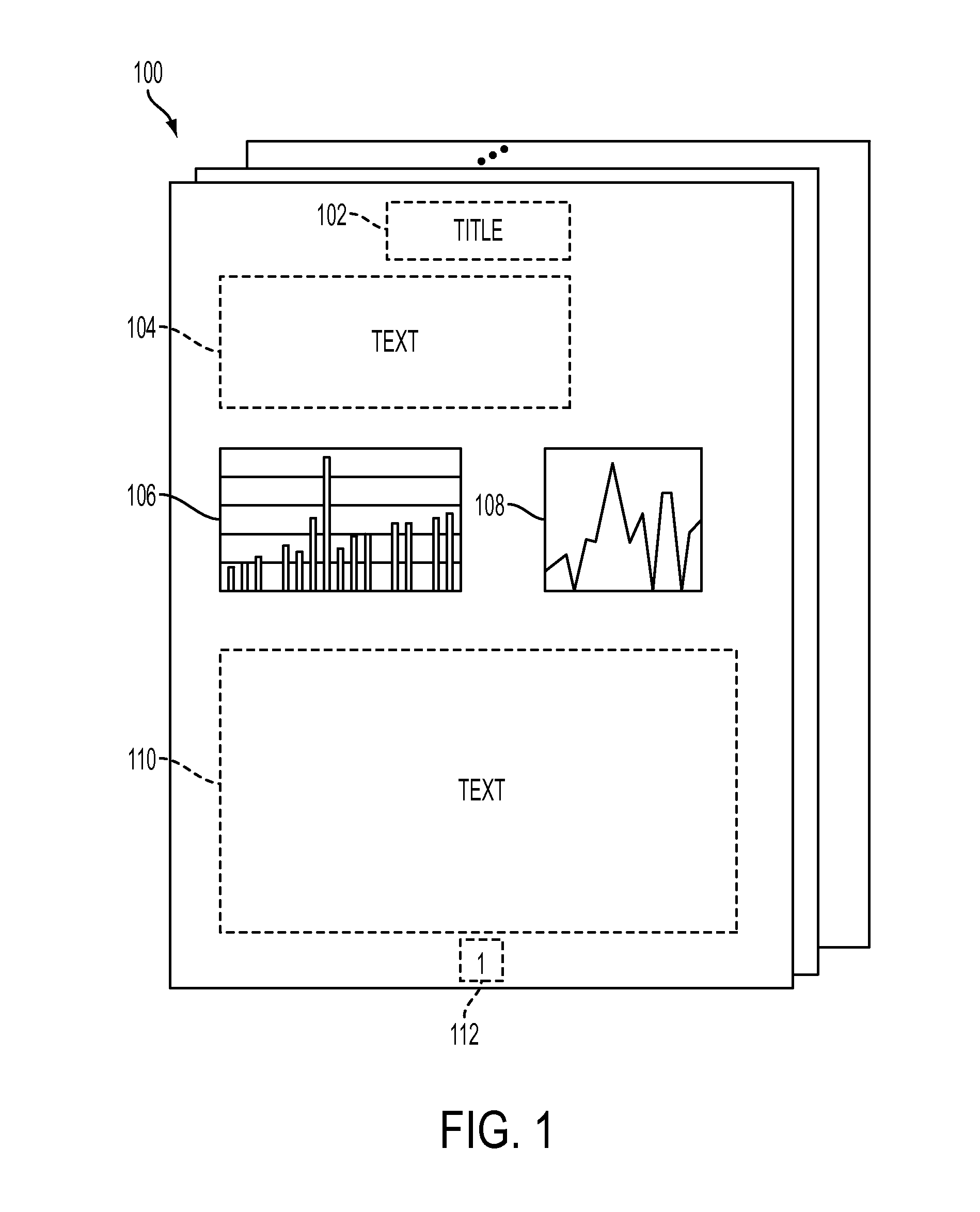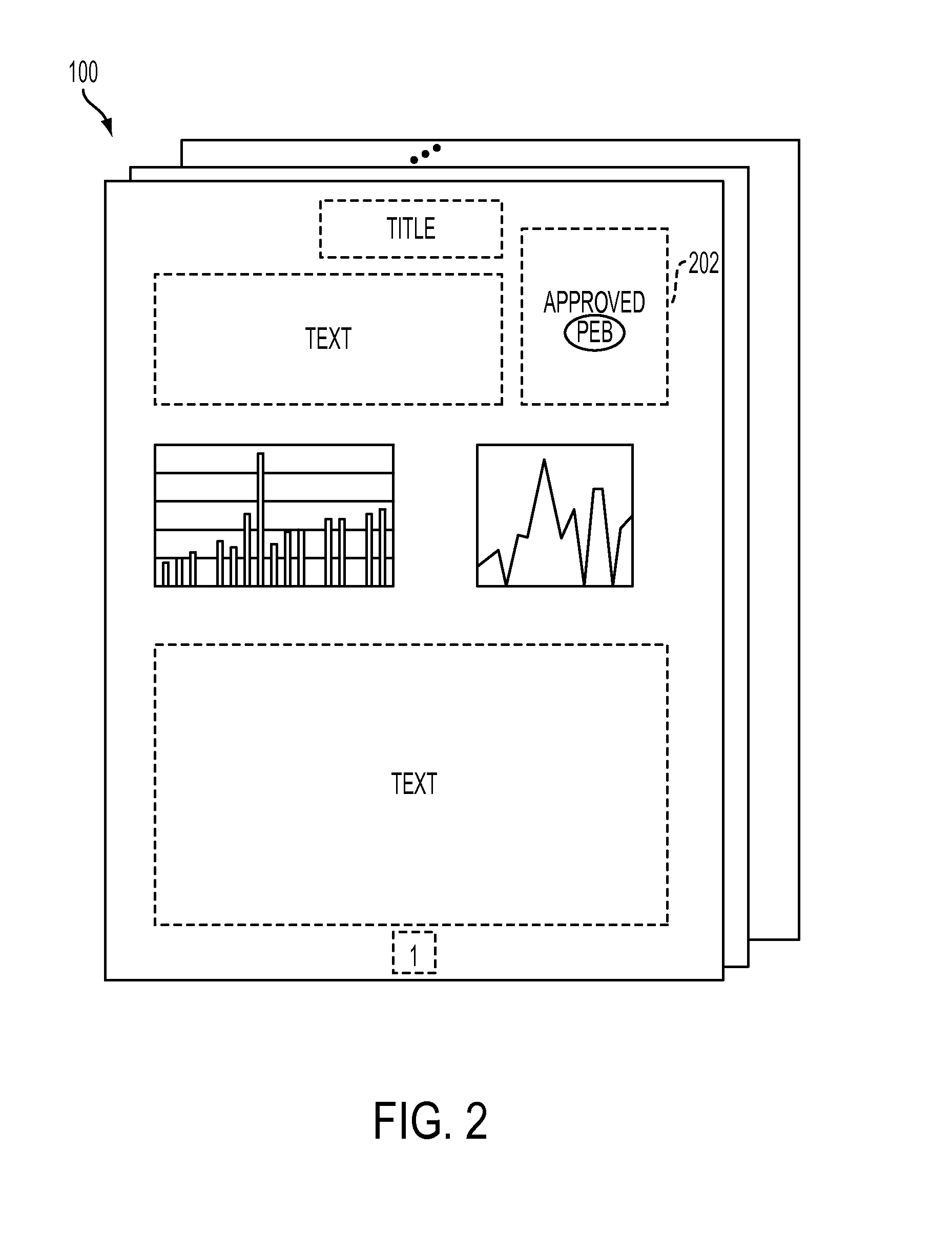Preserving user applied markings made to a hardcopy original document
a technology for original documents, which is applied in the field of preserving user applied marks on hardcopy original documents, can solve problems such as printing defects in hardcopy prints
- Summary
- Abstract
- Description
- Claims
- Application Information
AI Technical Summary
Benefits of technology
Problems solved by technology
Method used
Image
Examples
example marked document
[0082]Reference is now made to FIGS. 3 and 4 which illustrate examples of original documents with various object types contained therein. Page 300 includes text object 302, solid fill object 304, text object 306, graphic object 308 which has embedded therein color line art objects 310 and 312. Page 400 includes graphic object 402, high frequency halftone object 404, text objects 406 and 408, line object 410 which embeds low frequency halftone object 412. Also shown in FIG. 4 are two user markings. A first handwritten user marking at 412, shown encompassed by a dashed line, is an example user-applied comment that the art object 402 be made bigger. A second handwritten user marking at 414, also shown encompassed by a dashed line, recommends that the author delete the line object 410, for some reason. The user who applied this particular marking to the hardcopy of the circulated original document also wrote the name “JIM” as part of user marking 414. The first and second user markings ...
example workstation
for Record Retrieval
[0111]Reference is now being made to FIG. 15 which illustrates an example workstation system for retrieving at least some of the plurality of records and combining the user markings obtained from the retrieved records with image of the original document to produce new composite document. A plurality of records, shown collectively at 1300, have been created in accordance with the above-described embodiments and are further shown and discussed in detail with respect to FIG. 13. These records contain object identification information and, in this embodiment, an extracted user marking associated with the identification information. Although on a first record 1302 is shown, there are 4 records containing user markings and each of their respective object identification information. Such records are stored in a storage device (not shown) and are readily addressable by a central processing unit of workstation 1508 either directly or in response to a user query. An exampl...
PUM
 Login to View More
Login to View More Abstract
Description
Claims
Application Information
 Login to View More
Login to View More - R&D
- Intellectual Property
- Life Sciences
- Materials
- Tech Scout
- Unparalleled Data Quality
- Higher Quality Content
- 60% Fewer Hallucinations
Browse by: Latest US Patents, China's latest patents, Technical Efficacy Thesaurus, Application Domain, Technology Topic, Popular Technical Reports.
© 2025 PatSnap. All rights reserved.Legal|Privacy policy|Modern Slavery Act Transparency Statement|Sitemap|About US| Contact US: help@patsnap.com



